Pipe Dreams: Why Interlinking Ken-Betwa Will Not Solve Bundelkhand's Water Crisis
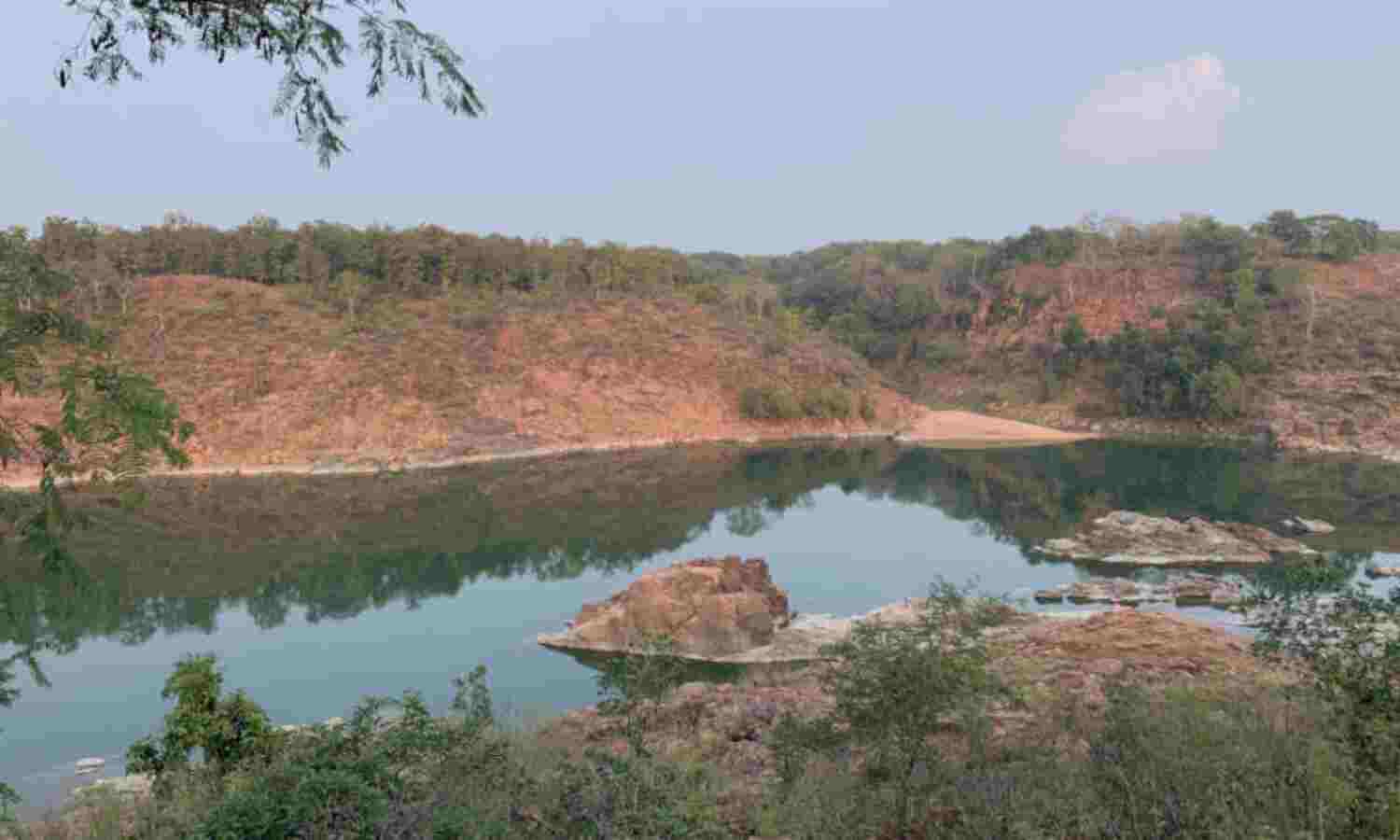

This series was produced in partnership with the Pulitzer Center. The story contains footnotes marked with asterisks
Panna and Chhatarpur, Madhya Pradesh, and Banda, Uttar Pradesh: Each day, Gulab Singh, a 55-year-old farmer from Uttar Pradesh's Banda district, asks himself if he made the right choice.
A devastating drought hit his home in the central Indian region of Bundelkhand around a decade ago. Stretching over three years from 2005 to 2008, it dried the region's wells, parched its soil and killed its cattle. Eager to leave the destitution behind, many joined the throngs that had, for years, migrated to cities in search of work. Gulab Singh, fearful of swapping one precarious life for another, chose to stay and farm his family's two-acre plot.
Now, as securing water to feed his crops has become increasingly challenging, he sometimes regrets his decision.
"The water level [in our tube wells
Gulab Singh is among the 14.4 million people who depend on agriculture across Bundelkhand's 13 districts, spread over Uttar Pradesh and Madhya Pradesh. The region, home to the monumental Khajuraho sculptures, is witnessing more frequent droughts; rising from one every decade over the last century, to seven between 2005 and 2015.
The monsoon was delayed by a month in 2019. When it eventually arrived in July, it rained so heavily that much of Gulab Singh's kharif (monsoon) crop was destroyed. "Hardly any year brings normal rains now," he said. "Who knows if we will even be able to farm here in 20 years' time."
Below average rainfall in consecutive years and changing rainfall patterns have hurt farmers' livelihoods, as well as access to drinking water, in the region. But Bundlekhand's acute water crisis cannot be blamed on nature alone, as per the findings of a 2014 report that analysed drought patterns in the region.
The lack of water is largely a man-made problem, aggravated by policies that support faulty cropping patterns, encourage groundwater exploitation, degrade the soil and hack away at forest cover, the report found.
Bundelkhand: A Drought-Prone Region
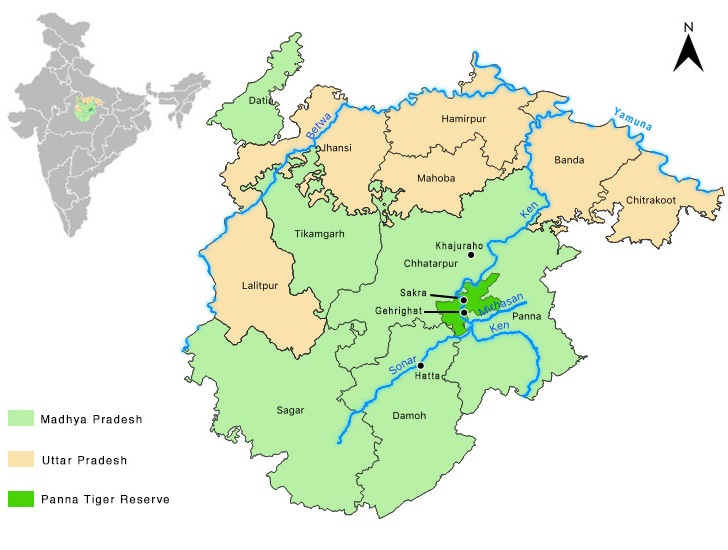
Note: District borders are based on Election Commission of India's polling station locations, scraped by Datameet.org. Rivers from OpenStreetMap; Borders for Panna Tiger Reserve are from Protected Planet
The National Democratic Alliance (NDA) government believes the solution to Bundelkhand's water crisis lies in spending Rs 18,000 crore ($2.8 billion) on the Ken-Betwa River Link Project (KBLP).
The Ken and the Betwa are both tributaries of the perennial Yamuna river. The project, in the first phase, envisages building a reservoir and dam on the river Ken, and constructing a canal to funnel "surplus" water from the Ken basin to the "deficit" Betwa basin.
The project aims to irrigate 635,000 hectares of farmland across six districts--Chhatarpur, Tikamgarh and Panna in Madhya Pradesh, and Mahoba, Banda and Jhansi in Uttar Pradesh. Its 218-km canal network is projected to bring a 18-42% increase in agricultural productivity for farmers, according to information in the project's Environment Impact Assessment
As a consequence of building a reservoir and dam on the Ken river at Daudhan village in Chhatarpur district, the KBLP is expected to submerge 4,141 hectares of Panna Tiger Reserve, a Protected Area
Another PA, the Ken Gharial Sanctuary, will also be affected, according to the report. The flow of silt in the Ken river will change owing to the dam and disrupt the ecosystem, impacting the breeding patterns of gharials and other aquatic life.
The Ministry of Environment, Forest and Climate Change approved a total of 40 projects within India's PAs, according to an IndiaSpend analysis of 2,115 environment clearances granted to proposals between July 2014 and March 2020.
Residents, stakeholders and environmentalists do not believe that the Ken, or Karnawati as the river is called in ancient scriptures, has water to share. In 2016, the river's flow slowed to a trickle, running dry at Gehrighat (a location inside the Panna Tiger Reserve) and Sakra village, throughout May and June, according to an aquatic ecology expert who has surveyed the Ken river.
The terms 'surplus' and 'deficit' as used by government agencies are misnomers, environmentalists say, since such anthropogenic measures do not apply to natural resources. The government data, about the "surplus" water, are not in the public domain; the agency responsible for river-linking schemes, the National Water Development Agency (NWDA), refuses to share this information.
The economic argument for the project has also not been factored against the significant ecological toll that damming a river, diverting its course and disrupting ecosystems will bring, say observers.
"Destroying old and biodiverse forests to build reservoirs, divert and dam rivers without even appreciating the hydrological contributions of the forest ecosystem, is simply mindlessness," Himanshu Thakkar, a water expert and regional coordinator at the South Asian Network on Dams Rivers People (SANDRP), told IndiaSpend. Forests act like sponges, said Thakkar, adding that tree roots and leaves help retain moisture in the soil and recharge aquifers below the ground. Since Bundelkhand witnesses chronic water shortages because of multiple ecological issues, like neglecting rainwater harvesting systems, soil health and "rampant" deforestation, "no massive engineering project like the Ken-Betwa [river] link can solve that", he said.
The project may also violate the Wildlife Protection Act, rendering the endeavour illegal (as we will explore later). Challenges to the wildlife
A delegation from the SC-appointed Central Empowered Committee (CEC) visited Bundelkhand in 2019, and published a report in August detailing the KBLP's myriad problems and stating that the project will have limited benefits.
Environment observers and stakeholders say there is no need to go ahead with the project, given economical and proven alternatives exist: Multiple water-harvesting and water-conservation methods could adequately store and efficiently make use of the 90 cm of rainfall the region receives annually, without the need for building a reservoir and dam. The central government, they say, would be wasting significant sums of public funds on an engineering-driven project that will do little to address Bundelkhand's water shortages.
The NWDA, the agency responsible for river interlinking projects, believes otherwise. The project will be "a boon to Bundelkhand region", Bhopal Singh, director general of the NWDA, told IndiaSpend in an email interview. The KBLP is "the best option available for addressing the water security of the region", he said, since it will "help in harnessing the flood water during the monsoon period and stabilize the water availability in the region in lean period, particularly during drought years".
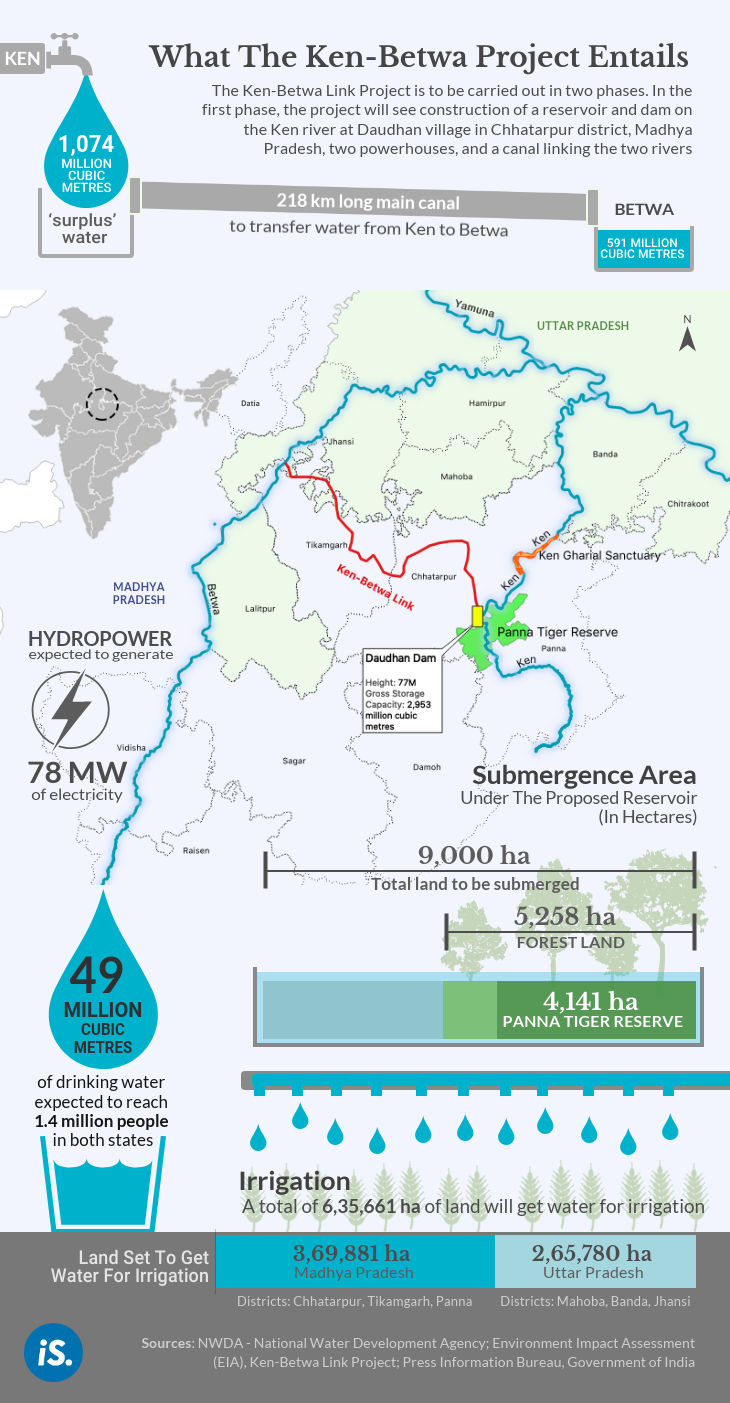
"Dream project", hidden data and ground reality
The KBLP was first proposed in 1982 by the then newly created NWDA as part of its Interlinking of Rivers programme (ILR). The KBLP is one component of the central government's vision to link 30 of India's river basins and build a 12,500-km countrywide canal system.
The ILR is a colossal infrastructure rollout aimed at redistributing the nation's water resources by moving water from India's wet regions to arid ones, much like a countrywide plumbing system. Areas with "surplus" water would benefit from flood mitigation, while "deficit" areas would see a boost in supply, enabling greater agricultural productivity and drought protection, according to a report on the ILR programme's economic impact.
For the Ken-Betwa project, the NWDA released a feasibility report in 1995.
In the decades since the scheme was initially sketched out, this engineering-led approach to managing water resources fell out of favour. Globally, the scientific community has advocated for improving water efficiency and conservation over large infrastructure projects that disrupt a river's flow, damage ecosystems and flood vast areas in order to construct reservoirs.
Labelling river basins as 'surplus' or 'deficit' is considered a misnomer by ecologists. Every drop of water in a basin's ecosystem is known to provide an ecological service and disrupting it can have unquantifiable effects. River volumes can also change, either due to climate change or water being drawn out of the river for various uses, implying that a source earmarked to fill a dam now, may not be available to do so in the future.
Even a decade ago, the river-interlinking concept seemed outdated. Experts, in a 2008 review, questioned why India's ILR programme did not "base itself on the emerging new knowledge base, rather than the traditional one, which is beating a retreat each passing day".
Despite the red flags, the Bharatiya Janata Party (BJP)-led NDA government revived the KBLP, and declared it a national project, shortly after it came to power in 2014.
In June 2016, Uma Bharti, then minister for water resources, reportedly said she would go on "anshan" or hunger strike "if there is another delay in giving environmental clearance to the Ken and Betwa river project". The project subsequently received two of the three necessary clearances--environment and wildlife--in the space of four months. It also received stage 1 forest clearance
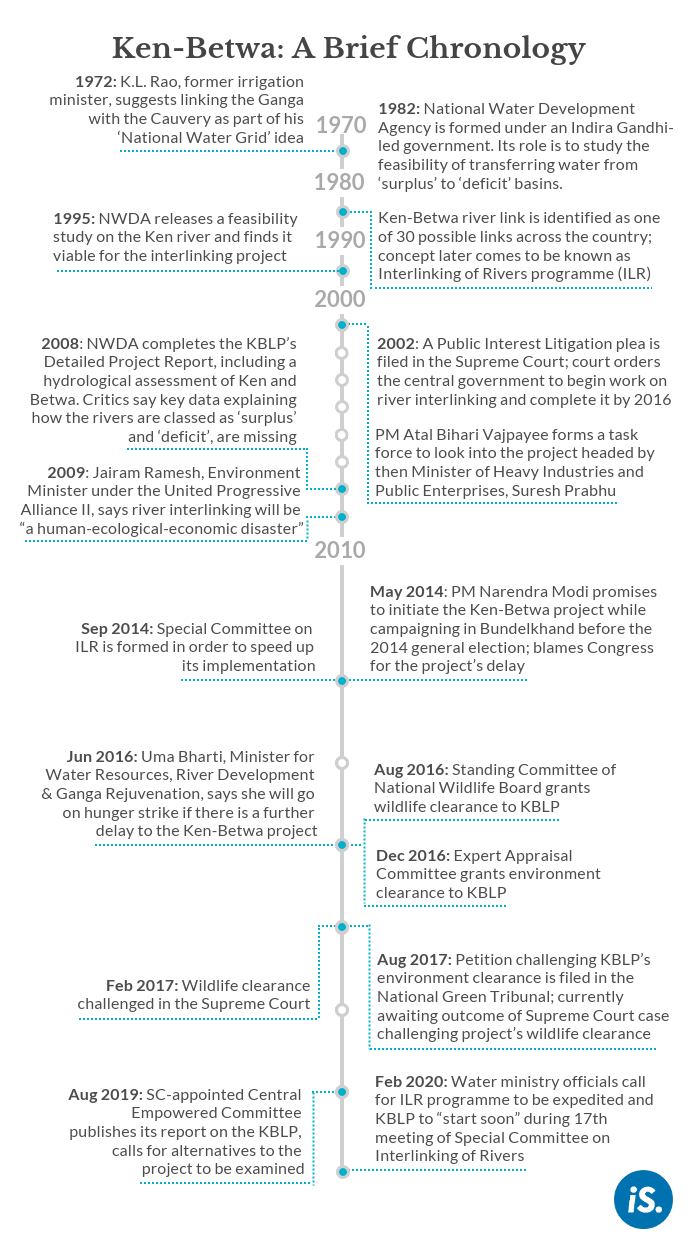
Sources: Note on Interlinking of Rivers: Details and Status, National Water Development Agency (NWDA), Interlinking of Rivers (ILR), Ministry of Jal Shakti, Department of Water Resources, River Development & Ganga Rejuvenation, Ken-Betwa Link Project Detailed Project Report, NWDA, Indian Express Archive, Oct 6, 2009, Aaj Tak, May 10, 2014, Economic Times, June 8, 2016, Central Empowered Committee, Government of India, Press Information Bureau (PIB), Government of India
Critics say that the essential premise of the Ken-Betwa project--that one river has surplus water to share with the other--has not been properly established. While the project's official hydrology report is available online, doubts over the project's feasibility still remain. The government has kept specific data, essential for greater public scrutiny, to itself, preventing independent studies, say researchers.
Aquatic ecology experts such as Brij Gopal from the Centre for Inland Waters in South Asia (CIWSA) refute that the Ken river has an extra 1,074 million cubic metres of water to share. He said the NWDA estimates of available water flow in the river are based on observations at Banda, and that these data have not been shared to allow independent verification. The agency's estimate on water requirement is also flawed, he added. Gopal has been living in Khajuraho, the ancient temple-town located between the Ken and the Betwa rivers, since 2010, surveying the Ken river's 300-km lower stretch between 2013-16, and watching it run dry in the summer months.
"The NWDA has relied more on modelling than on actual observations," Gopal, a former professor of environmental sciences at New Delhi's Jawaharlal Nehru University, told IndiaSpend. "Modelling data are based on many assumptions and do not match the ground reality," he said. "If there is surplus water, why do districts like Panna struggle to have enough drinking water?"
Gopal observed the Ken river running dry in the summer months, particularly during May and June 2016, when long stretches of the Sonar (a major tributary) near Hatta tehsil, almost the whole of Mirhasan (another tributary), and the Ken under the Pandavan bridge, at Gehrighat (inside the Panna Tiger Reserve) and Sakra village were dry.
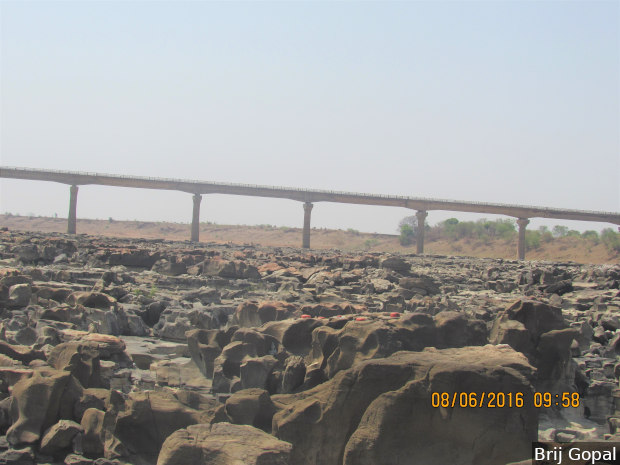
A dry Ken river bed under the Pandavan bridge in Panna district, Madhya Pradesh, in this photograph clicked in June 2016, by Brij Gopal, aquatic ecology expert and director at Centre for Inland Waters in South Asia. The National Water Development Agency maintains the river has 'surplus' water to share with the Betwa river.
The Ministry of Water Resources (MoWR) considers this information classified; even those sitting on public committees meant to evaluate the project have not seen the data on the Ken river's "surplus" water. The data cannot be shared for security purposes since the Ken is a tributary of the Yamuna river, which along with the river Ganga, is an international basin, the ministry says.
When asked, NWDA's Bhopal Singh did not say if he would consider making these data publicly available to allow greater scrutiny into the project. Studies into the project were carried out "as per the standard procedure followed for water resources projects" and the data "has been examined and reviewed thoroughly by Central Water Commission", he said.
Researchers and civil society organisations are growing concerned by a trend towards a lack of transparency and access to water data, as IndiaSpend reported earlier this year. They wonder how projects can be approved based on limited or old data and without a peer review process.
"Such secrecy is certainly not normal," Upmanu Lall, director of the Columbia Water Center, told IndiaSpend, adding that countries, including Bangladesh and Nepal, openly share similar data with researchers.
The central government's reliance on imperfect data on water resources has been called out by others too, notably by the seven-member committee, led by economist and former Planning Commission member Mihir Shah, that looked into water reform. In their 2016 report, the committee highlighted "serious gaps and inadequacies" in the data used to manage India's water resources. It also said that the Ministry of Water Resources, River Development & Ganga Rejuvenation "must engage with knowledgeable and reputed experts on water-related issues from relevant disciplines within and outside government".
"There have been significant hydrological and land-use changes to river basins in the last few decades, which these river linking projects often do not factor in," Jagdish Krishnaswamy, senior fellow at the Suri Sehgal Centre for Biodiversity and Conservation at Bengaluru's Ashoka Trust for Research in Ecology and the Environment (ATREE), told IndiaSpend.
Krishnaswamy said that the so-called surplus water in a basin including in the wet season actually performs very important functions such as moving sediment downstream and supporting fisheries. He added that the decision makers must consider that climate change is altering our planet in irreversible ways. "To say that one basin is going to be permanently surplus and [the other will be] permanently deficit ignores the fact that we are already seeing major changes in rainfall patterns," he said. "Given the degrees of the unknown here [as a result of climate change], we need more transparency into how river interlinking projects are deemed feasible."
Unsustainable farming practices
India ranks as 'hazardous', the highest category, in the national water security index compiled by the Asian Development Bank. The balance between abstraction and recharge of groundwater has been skewed for years, and is only increasing. India's water scarcity could result in up to a 0.5% reduction, or $9.2 billion, in gross domestic product by 2050, according to a 2020 modelling study about the economic impact of environmental change.
A majority of India's groundwater, around 90%, is consumed by agriculture. Not only does a disproportionate amount of the country's water go into farming, around 80% of it also goes to water-guzzling wheat, rice and sugarcane crops.
"We love some crops and their farmers too much" and "other crops and their farmers not enough", Arvind Subrmanaian, former chief economic adviser to the Government of India, said during a lecture on Indian agriculture reform in 2017. He was referring to the fact that the government's procurement system and minimum support price policies have encouraged farmers for decades to grow only a few types of crops, regardless of their climatic conditions.
Such policies are a key factor why farmers even in drought-prone regions, such as Bundelkhand, backed by the assurance of a guaranteed market, flood their fields to grow rice paddy or thirsty wheat varieties.
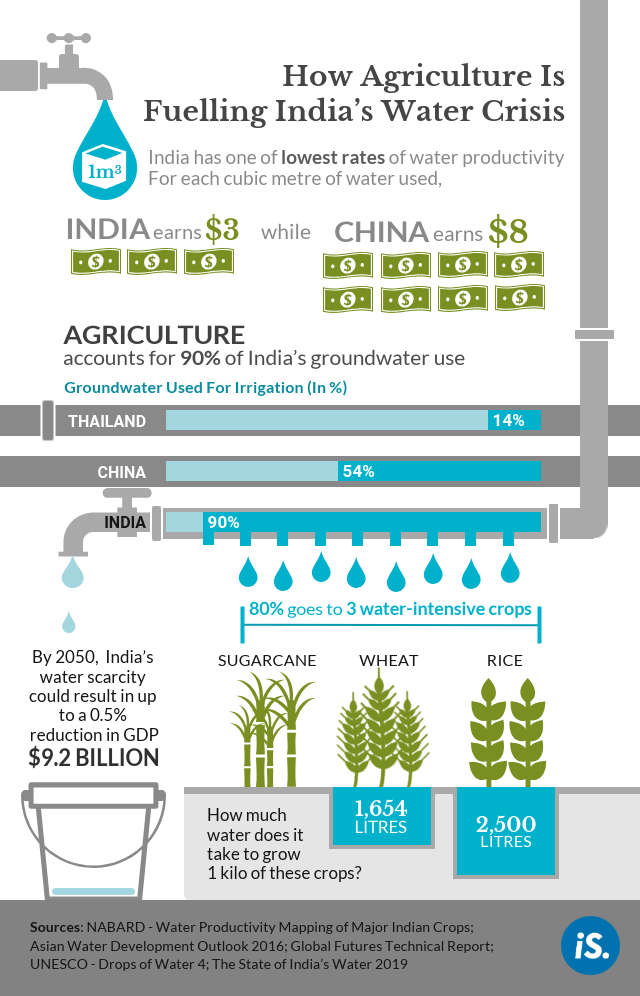
In Bundelkhand, 56% of agricultural produce comprises cereals, i.e. crops such as rice, wheat, maize, millets, etc. But growing rice in Bundelkhand, for example, appears to make little sense when one considers that the region's average rainfall--at around 800-900 mm per year--is lower than what a 100-day rice crop needs--up to 1,500 mm of water per season, according to a 2018 report on water productivity mapping of major crops in India.
Yields are also low, meaning farmers in water-stressed regions produce comparatively little for the water they consume. Tikamgarh, a district in the Madhya Pradesh part of Bundelkhand, has the lowest average rice crop yield in the country at 0.5 tonnes/hectare against a national average of 3.6 t/ha.
Excessive wheat and rice farming also damages the soil structure, turning it into a fine powder. "This is a particular problem for drought-prone areas such as Bundlekhand since the soil is unable to store rain water," G.V. Ramanjaneyulu, agricultural scientist and executive director at the Centre for Sustainable Agriculture in Secunderabad, told IndiaSpend. "Farmers in these areas need support to change their cropping patterns towards pulses and oilseeds and practice this in the long term."
Some in Bundelkhand understand the folly of farming in this way, and are advocating change.
"The tragedy [of the region] is that we have become dependent on just three or four crops," Pushpendra Singh, a farmer-activist in Chhatarpur, Madhya Pradesh, told IndiaSpend. "This is simply not sustainable. We are running the tube wells dry."
Pushpendra Singh grew up in the shadow of the Green Revolution
Having lived through several water crises compounded by these events, Pushpendra Singh now preaches a return to organic, more water-conscious farming methods. In late December, he showed IndiaSpend around a model farm in Chhatarpur where he teaches such methods to other farmers in the region. Its fields were lush with a winter crop of vegetables and chickpeas. Other parts of the farm were sectioned off for cattle-rearing and making natural fertiliser.
"This is the ideal farm layout for the region," said Singh. "Farmers can diversify their income, increase their own consumption of vegetables and pulses, and help heal their soil too."
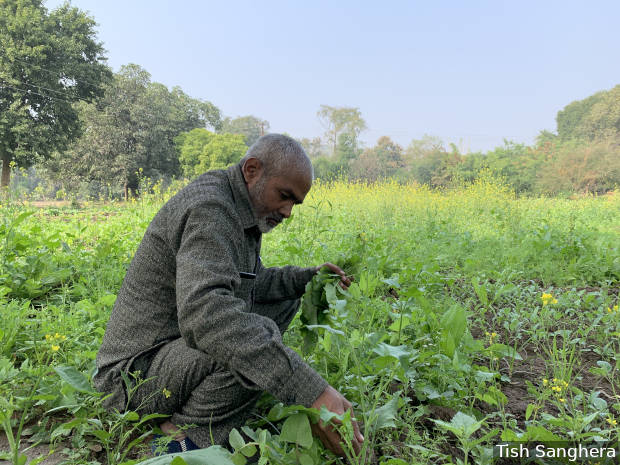
Pushpendra Singh tends to a mustard crop in Chhatarpur district, Madhya Pradesh. He believes that if Bundelkhand's farmers move away from cash crops such as wheat and rice, to pulses, they can avoid water scarcity.
Research upholds Pushpendra Singh's response to local water scarcity. If farmers in arid to semi-arid regions chose their crops based on optimal water use, rice production would likely decrease by up to 75%, and the cultivation of pulses would increase by more than 75%, according to a 2012 simulation modelling study. For Bundelkhand, this could mean a return to growing hardy crops such as chickpeas and traditional grains such as sorghum (jowar) and pearl millet (bajra).
Improving India's water productivity is "the fundamental problem that the government should be working on", said Columbia Water Centre's Lall.
Observers such as Ramanjaneyulu from the Centre for Sustainable Agriculture agree that government policies should focus on these core problems. "The current mindset [within the Ministry of Water Resources] is that irrigation is the only solution for areas where agriculture is rain-fed. This is misguided," he said. Dams need maintenance and the sudden increase in water supply encourages farmers to continue growing crops with a guaranteed market, such as wheat and rice, he added. "If we do build dams, we must also look at minimising water consumption. This means changing cropping patterns."
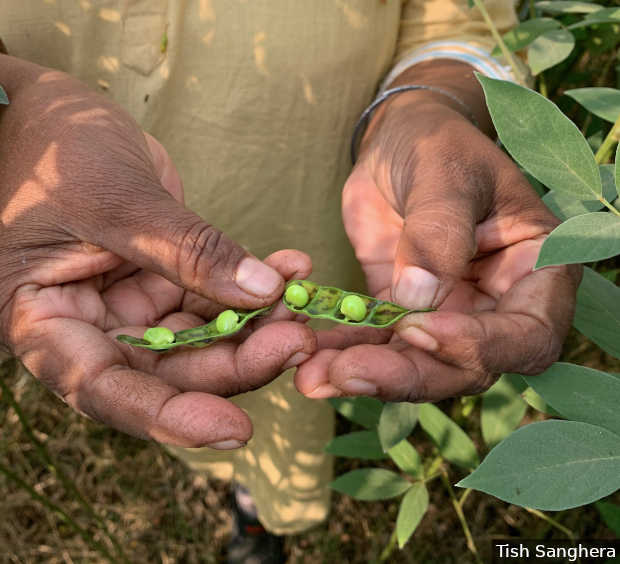
Chickpeas, growing in a farm in Chhatarpur, Madhya Pradesh, consume less water during cropping compared to cereals such as rice and wheat. They were traditionally grown in Bundelkhand before the Green Revolution of the 1960s.
Simply asking millions of poor farmers to forego the guaranteed income attached to crops such as wheat and rice may not be enough. The government would need to introduce minimum support prices for crops such as pulses too in order to encourage the switch and reduce farmers' risk, say stakeholders and observers.
"Making better choices about which crop is procured from which region in India can solve much of the water problem," said Lall. Benefits could accrue further if policymakers also designed a "smarter food export policy that avoids flooding the global market with rice", he said. Given that it takes around 2,500 litres of water to grow a kilogram of rice, this effectively amounts to exporting India's limited water reserves.
"It all boils down to fixing these structural issues," Lall added. "Unfortunately, we are seeing slow progress here. Politicians are less interested in policy reform because [unlike building irrigation projects], there's no giant structure they can slap their names on."
Less water for Panna, more opposition against project
When the summer heat peaks in central India during the months of May and June, Bhavna Kumari, co-owner of an eco-resort on the Ken's eastern bank, watches the Panna district suffer.
"Fights break out over the last inches of water in the wells," Kumari told IndiaSpend. "The women are condemned to hours-long treks to find drinking water."
In particularly bad years, she added, the district collector has issued arrest orders for anyone seen taking water from the river. "Yet, somehow they say the Ken river has a surplus!"
During a 2017 public hearing held in Hinouta village, Panna district officials described the project as "a lifeline for Bundelkhand region" that will provide "many fold [sic] benefits… like irrigation, drinking water facility, ample employment opportunity, enhancement of lifestyle etc". Many in the area are skeptical. They fear their already inadequate water supply may dwindle further.
"If the water level in the river reduces after the dam is built at Daudhan, then it will mean that our wells will dry up. The two are linked," said Kumari. "Essentially, they are stealing our water without ensuring our survival."
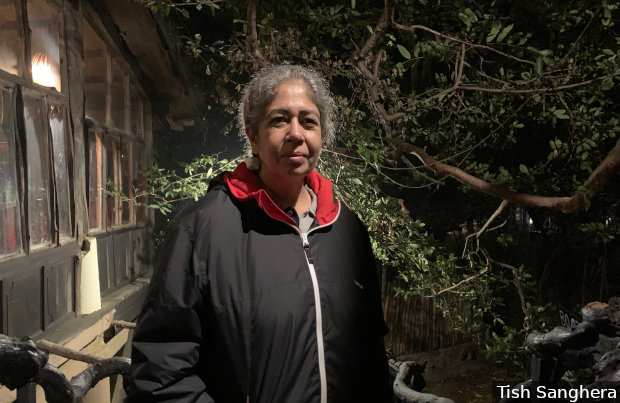
Residents such as Bhavna Kumari in Panna district, downstream from Daudhan where the proposed dam is to be built on the Ken river, are worried that their wells will dry up if water is diverted from the Ken, their main water source, to the Betwa. They say impacts like these have not been adequately considered.
SANDRP's Thakkar pointed out that the project's intention has never been to increase the water availability in downstream districts such as Panna or Banda. "The Detailed Project Report says upfront that the main purpose is to feed water to Vidisha and Raisen districts in Madhya Pradesh [in the Upper Betwa basin]," said Thakkar. "All this talk--that Bundelkhand is getting more water and [that the project] will help solve the water crisis--is pure propaganda to help their cause. This part of the region will suffer almost all the damage, with paltry benefit."
That the KBLP will channel water outside Bundelkhand is something that the SC-appointed CEC also picked up on.
In a report, it called the plan to boost the Betwa basin's river volume with water transferred from the Ken a solution to "faulty planning in development of irrigation facilities in the lower Betwa basin" in the past. Additionally, the project is "bound to deprive the farmers in the upper Ken basin/catchment area", it warned.
The NWDA states that downstream residents have no need to worry about their groundwater levels falling after the Ken is dammed. In fact "after [the project's] implementation, the regulated flows from the dam will further improve the availability of water in the downstream district," said Bhopal Singh, the NWDA director general.
His reassurances are not enough for Kumari, the resort-owner. She is concerned for the future of tourism businesses such as hers, which are dependent on the river Ken and provide some of the few non-farming jobs around. Traffickers preying on the desperate could exploit more people if life in Panna and the surrounding districts becomes harder, she fears. "A few of my employees recently got mixed up with these gangs... they paid Rs 16,000 each ($224) to go to Gujarat but ended up trapped there without making any money."
Kumari is keen to ensure that livelihoods in the district are not further endangered by a project that risks the area's main water source. This means raising support against river linking through public demonstrations and tackling common misconceptions about the project.
"People have only heard that the government will spend thousands of crores in Bundelkhand," said Kumari. "But they do not understand the reality. Very little of Panna is irrigated at the moment, so they assume that this district must be getting help. Of course many people want it that way [that such misunderstanding prevails]."
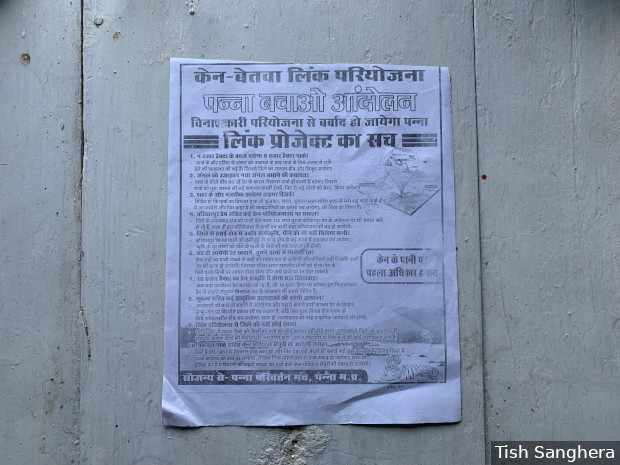
A flyer made by a local opposition group, the Panna Parivartan Manch, details how the Ken-Betwa Link Project will negatively impact their district.
Un-Protected Area
In 2008, the Panna Tiger Reserve had no tigers after years of poaching had wiped out the local population. Seven tigers from two other parks in Madhya Pradesh were shipped across to take their place. Tiger numbers have since increased to around 50. Wildlife experts now fear that flooding a part of their core habitat with the Ken-Betwa link's reservoir, as planned under the KBLP, will endanger the population of India's national animal and other wildlife in the reserve.
"Not long ago, the Panna Tiger Reserve was deemed worthy of investing a huge amount of time and effort in for a very successful tiger reintroduction programme," Joanna Van Gruisen, a conservationist and wildlife photographer based in Panna, told IndiaSpend. "So it is extraordinary that they now want to reverse that [gain in tiger population] by activating this [the Ken-Betwa] link."
India's Wildlife Protection Act, 1972 states that only those projects that are found to be "necessary for the improvement and better management of wildlife" ought to be allowed within PAs.
The wildlife clearance, granted to the Ken-Betwa project by the National Board for Wildlife
The committee went on to approve the project in August 2016. In its decision, it focussed on "the importance of the project for meeting the irrigation needs of Bundelkhand region".
Van Gruisen pointed out that the region's water requirement falls outside the NBWL's purview. "The Committee's statutory duty is 'to promote the conservation and development of wildlife'," she said. "It is not for them to decide whether wildlife interests should give way to development projects."
With up to 4,141 hectares of Panna Tiger Reserve on the line, as well as water flow into the Ken Gharial Sanctuary likely to be affected, the wildlife clearance is currently being challenged in the Supreme Court on the basis that the project violates the Wildlife Protection law.
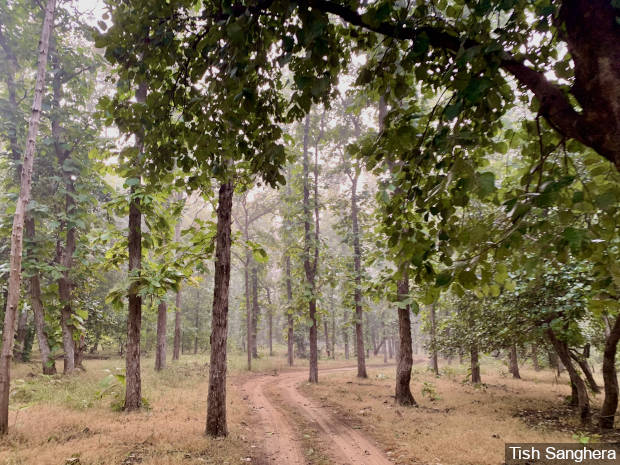
The Ken-Betwa Link Project will submerge 4,141 hectares of Panna Tiger Reserve, or 7.6% of the core area, home to tigers, leopards, hyenas and other animals. The project's wildlife clearance is currently being challenged in the Supreme Court.
Shrinking the area of the Panna Tiger Reserve will have a "direct impact in terms of loss of habitat and ecosystems, as well as indirect impact on several endangered species [such as vultures, gharials and tigers]," Uma Ramakrishanan, assistant professor at the National Centre for Biological Sciences (NCBS), Tata Institute of Fundamental Research, Bengaluru, told IndiaSpend. The size of a tiger population is strongly linked to the availability of prey, she said. Any reduction in area will decrease the amount of prey the area can support. "Essentially, if you shrink the size of the reserve, you are limiting the extent to which tigers and other wildlife can thrive and grow there," said Ramakrishnan, who studies the genetics of threatened South Asian species.
The NWDA recognises that the project will impact an eco-sensitive area. Nevertheless, NWDA officials say the area's wildlife population will actually benefit from the project. "The availability of water in the Daudhan dam will further improve the living conditions of the animals/birds in the project area," Bhopal Singh, the NWDA's director general, wrote in an email interview to IndiaSpend. He also reiterated the NBWL's recommendation when granting wildlife clearance that "matching revenue land or double the degraded forest land" ought to be forested and added to the Panna Tiger Reserve in compensation for the submerged areas.
India is a signatory to the St Petersburg Declaration on Tiger Conservation, and has committed to making "critical tiger breeding habitats inviolate areas where no economic or commercial infrastructure development or other adverse activities" would be permitted. Prime Minister Narendra Modi said at an international tiger conference in April 2016 that protecting tigers "is not a choice. It is an imperative". Months later, his NDA government approved the KBLP despite its threats to India's tigers.
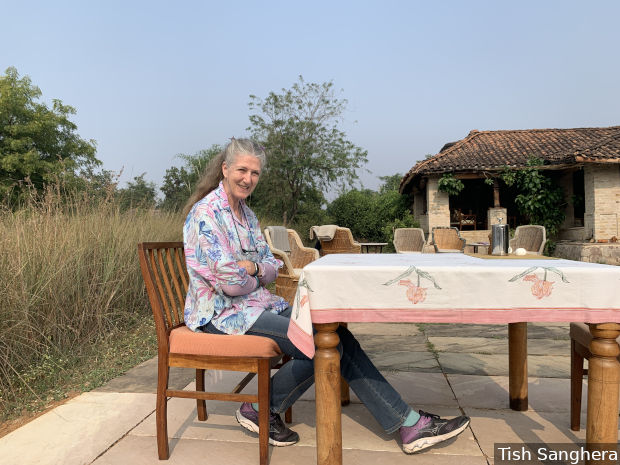
Joanna Van Gruisen, a conservationist and wildlife photographer, at her home in Panna, Madhya Pradesh. She warns the Ken-Betwa Link Project will undo the tiger reintroduction programme's success, which managed to increase the animal's numbers in Panna Tiger Reserve from zero in 2008 to around 50 today.
It is not just the project's wildlife clearance that is a cause of consternation for stakeholders and conservationists. The environment clearance is also problematic. Observers say violations in the way the two public hearings were conducted and glaring mistakes overlooked in the project documents show the approvals were pushed through without adequate oversight.
The Ken-Betwa project's EIA is "a dishonest document" riddled with multiple errors, an example of how, even for a multi-billion dollar project involving a PA, standards for complying with green laws are "abysmal", pointed out Thakkar. His petition challenging the validity of the project's EC was accepted by the NGT in August 2017; it is currently on hold, pending the SC's decision on the project's wildlife clearance.
Among the project's benefits listed in the EIA is a suggestion that the proposed reservoir could support tourism activities such as boating or serve as a spot for picnics, as well as create an area for fishing. None of these activities are permitted inside PAs.
The EIA also lists mammals, such as the slow/slender loris (loris tardigradus) and the Indian bison (bos gaurus), that have never been found in the area; it also mentions the presence the scaly anteater species manis culionensis, which is not found anywhere in India. It also states that sal trees (shorea robusta) are found in the Ken catchment area, and advises that these should be planted along the proposed canal, despite the nearest presence of this species being hundreds of kilometres away.
"Essentially, the project's documents are a manipulation exercise," said Thakkar. The project proponents intentionally downplay the project's impact on the local environment to secure clearances for the project, "though the project's cost-benefit calculations never calculate environmental or social impacts".
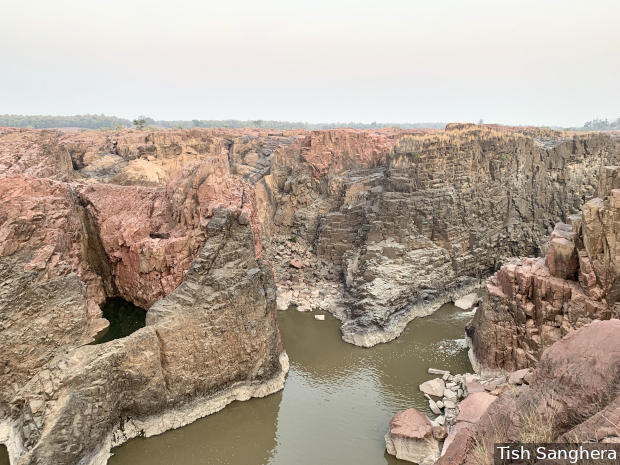
The Ken Gharial Sanctuary, situated downstream of the proposed dam inside Panna Tiger Reserve, will see a reduction in water flow if the project goes ahead. This will negatively impact the local gharial and fish populations, say wildlife experts.
Legal experts say issues like these are a feature of the inherent conflict of interest residing within India's green approval process.
The EIA, for instance, is meant to be an independent assessment about whether a project should be granted approval or not. EIAs are compiled by consultants hired by project proponents. "But the [independence of the] whole process is undermined if around 20% of an EIA consultant's fee is delivered only if a project is granted approval," Ritwick Dutta, an environmental lawyer, told IndiaSpend. "I've seen this in many cases. It has now become the standard contract format."
Cheaper, climate-resilient alternatives
"We have focused only on expenditure of vast sums of money for construction of dams and main canal systems, not on enduring outcomes," observed the 2016 Mihir Shah committee report. It went on to reveal how India's irrigation projects have often ended up in a bad state: with major projects costing, on average, more than 1,382% the original estimate and benefitting few farmers. As a result, the committee advised moving away from such a "narrowly engineering-construction-centric approach".
The CEC report on the Ken-Betwa project echoed a similar sentiment. It found that alternatives to the project "have not been examined by the project proponents".
The success of farmers such as 60-year-old Nawal Kishore Diwedi, from Panvi village in Banda district, Uttar Pradesh, could provide a solution to address the region's water scarcity. Diwedi built a 20-metre-wide pond on his farm in 2017. It has helped capture rainfall and recharge his farm's groundwater, he said. This has brought up the water in his tube well, making it easier to irrigate his fields.
Ever since, Diwedi has become a local cheerleader for pond-building, eager to share how he has increased his crop yield and is close to recovering his construction cost. "My mustard crop has doubled from two to four quintals as has the yield of my wheat crop," Diwedi told IndiaSpend.
"Our village now has eight ponds," said his son-in-law, Vedprakash Diwedi. "We are noticing that the water in the tube wells is easier to reach. Many people can now grow crops in two seasons."
Diwedi constructed his pond under the Khet Talab Yojana or Farm Pond Scheme facilitated by the Uttar Pradesh government. Under the scheme, farmers are provided 50% of the total funds, between Rs 50,000 and Rs 1 lakh, to build a pond.
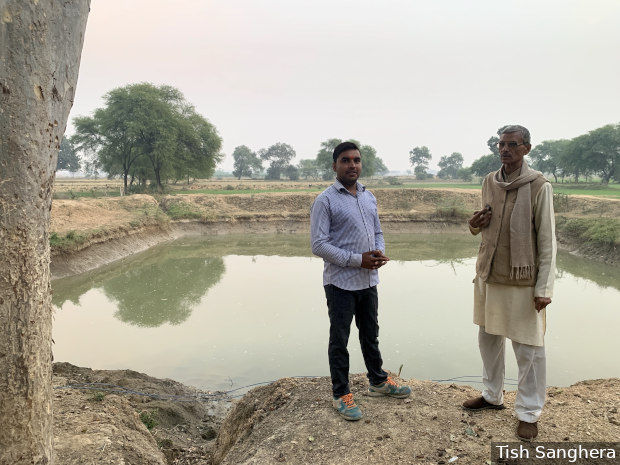
Nawal Kishore Diwedi (on right) with his son-in-law, Vedprakash Diwedi, in front of a pond built under the 'Khet Talab Yojana', or 'Farm Pond Scheme'. They no longer struggle to irrigate their fields and have observed a rise in groundwater levels.
Gopal, from the CIWSA, thinks this system of local water management combined with micro-irrigation and solar pumps could supplant the need for the KBLP altogether. His analysis, which he was asked to submit to the CEC, shows that nearly 44,000 hectares of farmland could be irrigated at a cost of Rs 880 crore, a 95% saving on the Rs 18,000 crore currently estimated for the Ken-Betwa project.
"I never straightaway opposed the project, but insisted that the NWDA should first examine the alternatives. This is a mandatory requirement for every project proposal, which has not been done," said Gopal. When there is a scalable, cost-effective irrigation alternative, he believes the project is not required.
"This project will take 10-15 years if at all implemented. It will also have limited benefits to farmers in Chhatarpur and Tikamgarh districts, living up to 1 km on either side of the proposed link canal," he added. "In the meantime a generation of Bundelkhand's people will die thirsty and without irrigation, while the government lets them dream that water is coming soon."
Rejuvenating centuries-old Chandela-era tanks and old water harvesting structures that still dot the Bundelkhand landscape may also bring positive results. Earlier, these structures were managed by local communities, but have been filled-in and built upon in the last few decades.
Repairing around 146 of these tanks in Tikamgarh district, for example, could irrigate around 29,000 hectares of land, according to a study by the International Water Management Institute and the Tata Water Policy Program. That is more than half the irrigation potential (47,000 hectares) planned for Tikamgarh, Chhatarpur, Hamirpur and Jhansi districts through the Ken-Betwa project.
The NWDA is unconvinced. "During a drought year, these water sources are not adequate to meet the water demands of the region and need augmentation of water availability," said NWDA's Bhopal Singh. The region's water source "can only be a reservoir".
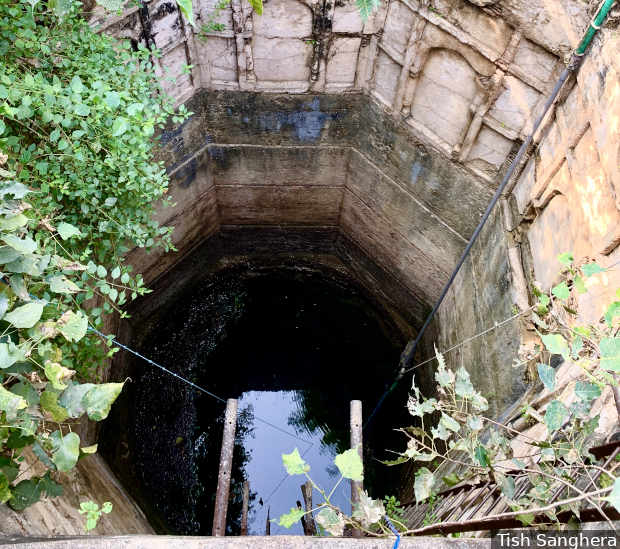
A 19th century well in Chhatarpur, Madhya Pradesh. Rejuvenating existing water-harvesting structures will be a more economical, less environmentally damaging alternative to big engineering projects such as the Ken-Betwa interlinking.
Observers say focusing on decentralised solutions, which suit the local ecology and involve local communities in the management of their own water resources, make more sense than building new and costly infrastructure. This is especially so given the changing climate and the emergence of central India as a hotspot for extreme weather events.
"We urgently need to think about ecological restoration linked to water-security," said ATREE's Krishnaswamy.
In addition to the solutions mentioned above, he added that "increasing forest or grassland cover in recharge zones and enhancing soil health by adding more organic matter into pastures and agricultural land", are some measures that can go a long way in regions such as Bundelkhand. "This is better than investing in costly infrastructure with a huge ecological footprint, that may not enhance our ability to adapt to future climate change."
This is the fifth and concluding part of a five-part series that explores the environmental, ecological and human cost of India's chosen path of development. You can read the first part here, the second here, the third here and the fourth here.
(Sanghera is an independent journalist. Graphics by Jameela Ahmed and Vishal Bhargav. Editing by Marisha Karwa.)
We welcome feedback. Please write to respond@indiaspend.org. We reserve the right to edit responses for language and grammar.


